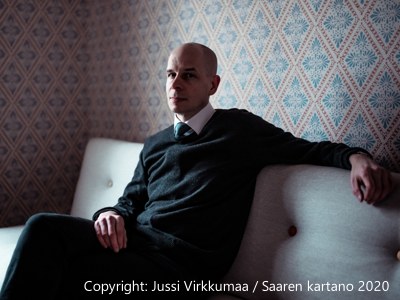Instrumentation: Pno solo, 1(Picc)-1(CA)-1(Basscl)-1, 1-1-1-0, Timp/Perc (2), 1-0-1-1-1
Publisher: Ms.
Duration: ca. 15′
FP: Oct 7, 1996, Dresden (10th Dresden contemporary music festival: Claudia Cassier, Pno/Ensemble Musica Temporale, Cond.: Christian Münch)
Radio broadcastMDR
CD: Docu-CD “9th & 10th Dresden contemporary music festival”
Further radio broadcasts:
BR 18.2.2002, Radio DRS 27.2.2002, SFB 15.4.2002
Introduction:
Décontenance – discomposure as a drive for composing. To loose countenance – to misbehave, however calculated!
To adopt a point of view which opposes against postmodernism (misinterpreted as a call for reactionary simplicity and fatuous fervour) but also against the unreflected application of all available techniques and media.
To struggle with countenance: with mental countenance. An artistic proposition which articulates itself in music, requires a high sense of responsibility in handling the musical material, sound, structure and dramaturgy.
Piano concerto – like solo concerto in general – always put to test between dubious mass production for just such virtuosos (or even spielmusik in the 20th century) and ravishing success; not at least again and again the composer’s attempt to create a portrait of his personality within the solo part.
In this sense ‘decontenance’ is a historically conscious composition, by no means an ‘anti-concerto’. In the course of the movement, a large-scale (in comparison to the overall length), symphonic central movement, a tender expressive part, even two cadenzas come along. Matching perfectly to the ‘classic’ form of the concerto, the piano is being dealt with as a primus inter pares while fundamental terms like a monologue-dialogue scene formed the skeletal structure for the conception of proportions between the solo part and the ensemble.
The virtuosity of the solo-part shall not be missed out, admittedly in a more internal way. It is especially supposed to emerge with the ability to create long passages in strictly one or two voices, with the ability to blend into the ensemble’s play like a member of a chamber music ensemble. Finally, especially the cadenzas feature no sign of multifaceted ways of playing, but merely dogged blocks of chords.
Chamber Orchestra – which today is rather a ‘modern’ composer’s compelled answer to the antiquated bourgeois symphony orchestra, whereas at the time of Schönberg’s opus 9 it rather was a voluntarily one. Today, when symphony orchestras might be in the position to fulfil specific expectations of modern music in matters of musicality and technique, they often are – according to no less specific expectations of the music market – no longer available. Comparable to Haydn’s days, chamber ensembles have been the main bearer of musical innovation.
When a young composer has overcome a certain discomposure that has been awoken by this circumstances, one usually discovers the attractiveness of this constriction. Actually, it offers more opportunities to concentrate on every single voice, on every nuance of an instrumental sound. Especially in a solo concerto, the composer is offered the possibility, if not the necessity, not to deal with any of the instruments just casually. He is supposed to develop a concerto ‘for chamber orchestra’ out of a concerto ‘with chamber orchestra’.
| A (T = 120) | I | II | III | VII | VIII | |||||
| 0′15 | 0′15 | 0′15 | 5′ | 0′20 | ||||||
| B (T = 90) | IV | VI | IX | |||||||
| 2′ | 2′30 | 1′ | ||||||||
| C (T = 60) | V | X | ||||||||
| 1′30 | 0′30 | |||||||||
| Fl/Picc | x | x | x | |||||||
| Ob/EH | x | x | x | |||||||
| Klar/Bkl | x | x | x | x | ||||||
| Fg | x | x | x | |||||||
| Hr | x | x | x | |||||||
| Trp | x | x | x | |||||||
| Pos | x | x | x | |||||||
| Schlz | x | x | x | |||||||
| Vl | x | x | x | x | ||||||
| Va | x | x | x | x | ||||||
| Vc | x | x | x | x | ||||||
| Kb | x | x | x | x | ||||||
| Klavier | x | x | x | x | x | x | x | x |
Thus, the composition is largely pre-structured by the emergence of different ensembles and the instrumental sound. According to their minority, strings are being used in four movements while winds and percussions only perform in three. In the course of the concert, a change of dominance from the winds to the strings can be discovered. Thus, the ‘piano ‘concerto’ ends in a ’string quartet’.
The musical material mainly derives from the ‘quasi improvisando’ third movement (first solo cadenza), which has been composed “with emotion”. In this part of the work, the composer uses different chords which, in matters of single notes, length and register, form the basis for the other movements. These include variations (I, II), linear and punctual interpretation (IV, V, VI) composing of chords in a changed order (VII, IX), retrograde formation of the third movement (VIII), and finally absolute fragmentation (X).
